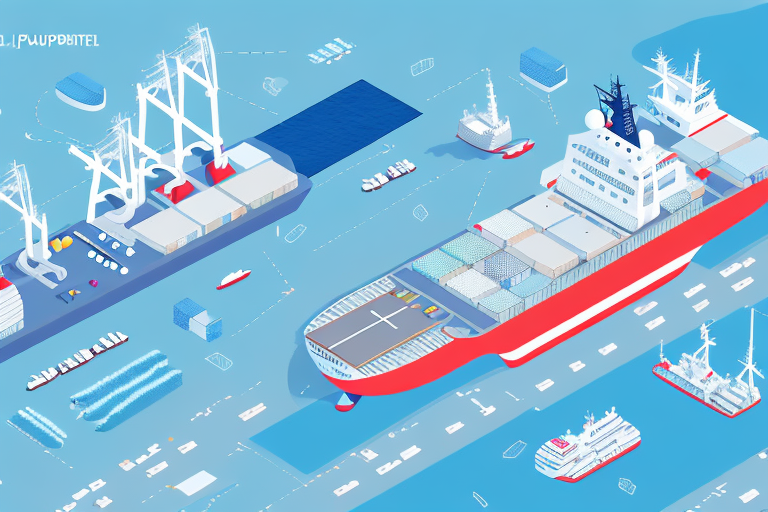Understanding the ISPS Code: A Comprehensive Guide to International Ship and Port Facility Security in the Supply Chain
In today's globalized economy, the security of maritime transportation is paramount for the seamless operation of the supply chain industry. To safeguard shipping vessels and port facilities, the International Maritime Organization (IMO) established the International Ship and Port Facility Security (ISPS) Code. This article offers an in-depth guide to the ISPS Code, highlighting its significance in enhancing supply chain security.
Why the ISPS Code Was Implemented and Its Importance in the Supply Chain
The ISPS Code was introduced in the aftermath of the September 11, 2001 terrorist attacks in the United States. The IMO recognized that terrorism posed a substantial threat to the security of global shipping and port facilities. The primary objective of the ISPS Code is to establish a standardized framework to enhance the security of ships, cargo, and port operations, thereby preventing incidents that could disrupt the supply chain.
Compliance with the ISPS Code is mandatory for all ships engaged in international voyages and for port facilities serving such ships. According to the IMO, effective implementation of the ISPS Code has led to a significant reduction in security breaches, thereby increasing trust in the maritime supply chain's safety and reliability.
One of the cornerstone requirements of the ISPS Code is the development and implementation of comprehensive security plans. These plans must identify potential security threats and outline measures to mitigate and respond to incidents. Regular security drills and exercises are mandated to ensure that all personnel are adequately prepared to handle security challenges.
While adhering to the ISPS Code can entail substantial costs and effort, it has been instrumental in fortifying the security posture of maritime operations worldwide. Enhanced security measures under the ISPS Code have not only protected assets but also facilitated smoother international trade by ensuring consistent security standards across different regions.
Overview of the ISPS Code Requirements for Ships and Port Facilities
The ISPS Code delineates security requirements for ships and port facilities through two levels of security: Level 1 and Level 2.
- Level 1: Basic security measures applicable at all times. These include the use of identification (ID) cards, access control systems, and surveillance mechanisms.
- Level 2: Enhanced security measures activated in response to heightened security threats. These may encompass armed security personnel, advanced screening procedures, and the establishment of restricted access zones.
Importantly, the ISPS Code's requirements extend beyond large commercial vessels to include smaller vessels like pleasure crafts and fishing boats. While the specific requirements may vary based on the vessel's size and type, all vessels must comply with the fundamental security measures outlined in the ISPS Code.
Additionally, ships and port facilities are required to conduct regular security assessments to identify and address vulnerabilities. These assessments inform the ongoing development and refinement of security plans, ensuring they remain effective against evolving security threats.
The Role of Security Officers in Implementing the ISPS Code
Security officers are pivotal in the implementation and maintenance of the ISPS Code. Their responsibilities encompass coordinating security measures, ensuring compliance with ISPS mandates, and conducting regular security evaluations. Proper training and expertise in security protocols are essential for these officers to perform their duties effectively.
Beyond their primary roles, security officers are tasked with the continuous identification of potential security threats and vulnerabilities. Their proactive approach involves assessing the security landscape, analyzing potential risks, and coordinating with port authorities, shipping companies, and law enforcement agencies to reinforce security measures.
Common Challenges Faced by Ship and Port Operators in Complying with the ISPS Code
Compliance with the ISPS Code presents several challenges for ship and port operators:
- Financial Burden: Implementing the requisite security measures can be costly, particularly for smaller operations.
- Understanding Requirements: A lack of clarity or understanding of the ISPS Code's stipulations can hinder effective compliance.
- Training Deficits: Inadequate training in security protocols can compromise the effectiveness of implemented measures.
- Operational Balance: Balancing stringent security measures with the efficient flow of cargo operations poses a significant challenge.
Moreover, the dynamic nature of security threats necessitates continual adaptation of security measures, which can be both time-consuming and financially taxing. Staying abreast of emerging threats and updating security protocols accordingly is imperative for sustained compliance.
Best Practices for Implementing Effective Security Measures in Accordance with the ISPS Code
To successfully implement the ISPS Code, organizations should adopt the following best practices:
- Comprehensive Risk Assessments: Conduct thorough evaluations to identify potential security threats and vulnerabilities.
- Technological Integration: Utilize advanced technologies such as imaging scanners, access control systems, and automated surveillance to enhance security.
- Stakeholder Coordination: Collaborate closely with regulatory authorities, shipping companies, and other key stakeholders to ensure cohesive security strategies.
- Employee Training: Provide regular training sessions on security protocols, threat identification, and response strategies to all personnel involved.
- Regular Drills and Exercises: Implement routine security drills to test and improve the efficacy of security measures.
- Continuous Improvement: Regularly review and update security plans to adapt to evolving threats and incorporate feedback from security assessments.
The Impact of Non-Compliance with the ISPS Code on Supply Chain Operations
Non-compliance with the ISPS Code can have profound repercussions on supply chain operations:
- Operational Disruptions: Non-compliant ships or port facilities may face detention, leading to delays in cargo delivery and disruptions in the supply chain.
- Financial Penalties: Authorities may impose substantial fines on organizations that fail to comply with ISPS requirements.
- Reputational Damage: Non-compliance can tarnish a company's reputation, resulting in loss of business opportunities and customer trust.
- Security Risks: Without adequate security measures, cargo is susceptible to theft, tampering, or terrorist activities, endangering both financial assets and human lives.
These consequences highlight the critical importance of adhering to the ISPS Code to maintain the integrity and efficiency of the global supply chain.
Case Studies of Successful Implementation of the ISPS Code in Real-World Scenarios
Several ports worldwide have exemplified the successful implementation of the ISPS Code:
- Port of Rotterdam: By integrating comprehensive security systems, including access control, surveillance, and communication technologies, the Port of Rotterdam has significantly enhanced its security while minimizing disruptions to cargo operations. This implementation has been recognized as a benchmark for effective ISPS compliance.
- Port of Singapore: Renowned for its robust security infrastructure, the Port of Singapore employs a layered security approach comprising physical barriers, advanced surveillance systems, and regular security drills. This strategy has led to a notable decrease in security incidents, reinforcing the port's reputation as a secure maritime hub.
These case studies underscore the effectiveness of the ISPS Code in real-world applications, demonstrating how strategic security implementations can fortify port facilities while supporting efficient supply chain operations.
Future Developments and Updates to the ISPS Code and Their Potential Impact on Supply Chain Security
The IMO continues to evaluate and refine the ISPS Code to address emerging security challenges. Anticipated future developments include:
- Enhanced Cybersecurity Measures: As maritime operations become increasingly digitized, the ISPS Code may incorporate specific cybersecurity protocols to protect against cyber threats targeting ships and port facilities.
- Comprehensive Screening Requirements: Future updates may mandate more rigorous screening of both cargo and personnel to prevent the introduction of security threats into the supply chain.
- Integration of Advanced Technologies: Incorporating emerging technologies such as artificial intelligence and machine learning to predict and mitigate security threats more effectively.
These updates will likely bolster supply chain security by addressing contemporary threats and leveraging technological advancements to enhance protective measures.
Frequently Asked Questions About the ISPS Code and Its Application in the Supply Chain
How do I determine if my operations need to comply with the ISPS Code?
Any ship engaged in international voyages and the port facilities that serve them must comply with the ISPS Code. Organizations involved in these operations should consult the ShipScience guidelines for specific compliance requirements.
What are the consequences of non-compliance with the ISPS Code?
Non-compliance can result in fines, detention of ships or port facilities, seizure of cargo, and reputational damage, potentially leading to loss of business and customer trust.
How can I ensure that my security measures meet the ISPS Code requirements?
Develop comprehensive security plans based on thorough risk assessments, invest in appropriate security technologies, provide regular training to personnel, and conduct routine security drills. Additionally, consider consulting with security experts and staying updated with IMO guidelines.
For more detailed information and guidance, the IMO website offers extensive resources and updates on the ISPS Code.
In conclusion, the ISPS Code is integral to maintaining the security and efficiency of maritime transportation and the broader supply chain. Mandatory compliance ensures a standardized approach to security, fostering trust and reliability in global trade. Effective implementation requires a strategic balance between robust security measures and the seamless flow of operations.
It is crucial to recognize that ISPS compliance is an ongoing commitment. Regular audits and assessments, conducted by accredited security organizations, are essential to verify continued adherence to the Code. Failure to comply can result in operational suspensions, emphasizing the need for continuous vigilance and improvement of security protocols among all supply chain stakeholders.








